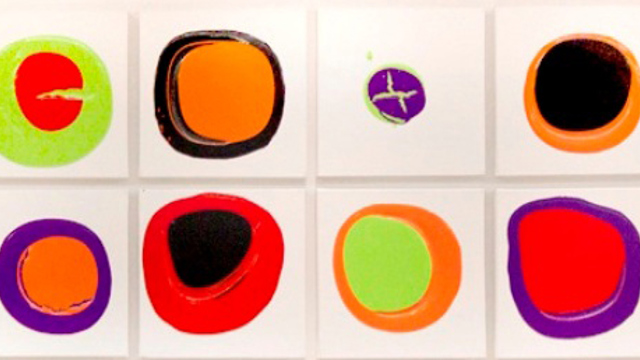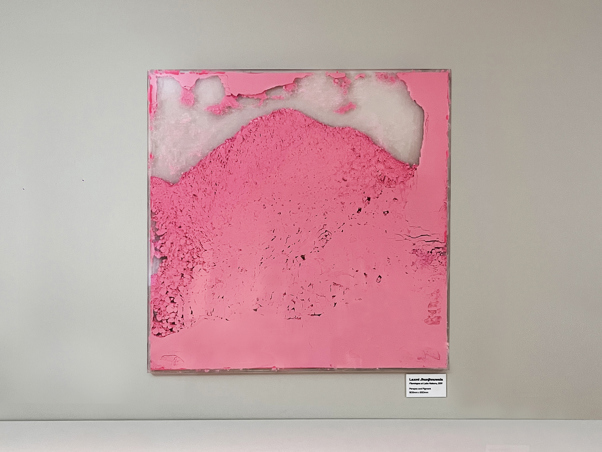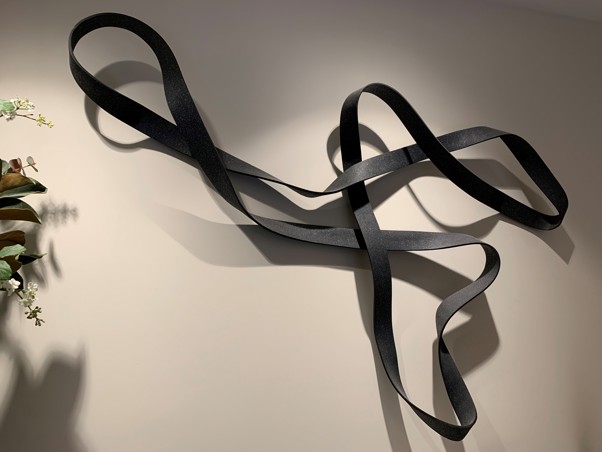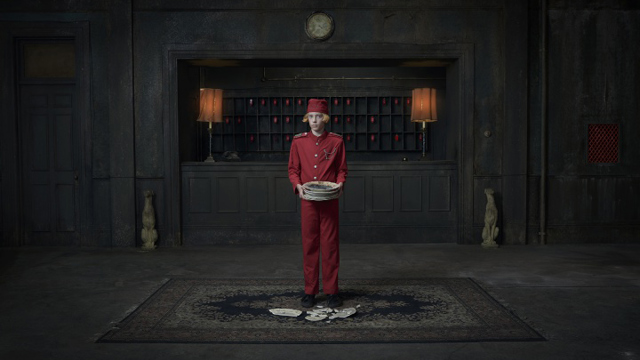Explore Local Art at Sudima Auckland City
Experience the artistic brilliance of three distinct creators at Sudima Auckland City. Upon arrival, enjoy an original work by Laxmi Jhunjhnuwala, where the yellow pigment dances within the perspex. Wander through our light-filled lobby, adorned with the iconic works of Colin McCahon and Heather Straka.
Heather Straka
Sudima Auckland City is proud to feature 'Age of Discovery', an immersive exhibition by renowned New Zealand artist Heather Straka. Wander through the hotel and uncover her captivating works, each telling a story of mystery and connection.
Read more about Heather or explore the full article by Andrew Wood to dive deeper into Heather Straka’s artistic journey.
Judy Darragh
-
ETHER

Sudima Hotels has commissioned celebrated Aotearoa artist, Judy Darragh to create a New Zealand first for public sculpture. Spanning an impressive 11 meters, Ether resembles a great cloud or galactic nebula expanding to fill its space. The sculpture’s rich fluorescent palette of yellows, pinks, reds and purples reflect the spectacular views over the Waitematā Harbour and Waitakere Ranges at Sunset, the hotel’s rooftop bar.
Judy Darragh is a leading figure in New Zealand’s vibrant art scene. Known for her use of unconventional materials, found objects and bold colours in sculptural assemblages. Her works are held in major collections including Christchurch Art Gallery Te Puna o Waiwhetū; Museum of New Zealand Te Papa Tongarewa, Wellington; Auckland Art Gallery Toi o Tāmaki; and Govett-Brewster Art Gallery, New Plymouth.
Ether was produced by Deborah McCormick Consulting.
Colin McCahon
-
Tomorrow will be the same but not as this is, 1958-1959, reprint.

In April 1958, Colin McCahon travelled to the US, responding both to the expansiveness of the American landscape and to the modern American paintings that he saw in museums. On his return, his works increased in scale while economizing in gesture: the landscape elements of tomorrow have been reduced to a horizon and lowering sky, with the land bisected by a grey river. He converted his Titirangi garage into a studio, and built an extra bedroom for his children underneath. The studio was gloomy – there was only one small side window for light when the garage door was closed – but it precipitated dozens of new works. Tomorrow was an unfortunate painting, said McCahon, ‘in that it wouldn’t go right, and I got madder and madder. I hurled a whole lovely quart tin of black Dulux at the board and reconstructed the painting out of the mess.’ The black paint (a commercial flooring paint, mixed with sand) dripped down the surface of the work and ran between wide cracks in the studio floorboards, ruining clothes and bed linen in his sons’ room below. He finally finished the painting in May 1959.
- Courtesy of Christchurch Art Gallery
Laxmi Jhunjhnuwala
-
Original piece

Jhunjhnuwala's installations are about a conversation between the ideas of the ephemeral and the permanent. One is about the tactile experience where one has the desire to touch the pigment and physically experience the work. While the other is about the visual experience, where given a few moments in front of these seductive works; the spectator is inevitably drawn by fleeting intangible moods. The perspex contains or shields the pigment from the touch. Jhunjhnuwala was also interested in the relationship between the reflective hard surface of the perspex, which captures the bouncing light and transitory images of the surroundings and the viewer experiencing the work, whereas the matt porous, delicate and fragile pigment creates pulsating evanescent expressions. These bodies of work are about revealing the universal truth about the material, journey and celebration of life.
-
Echoes of Chant, 2011. Original
 The world is forever changing, without any exception. Absoluteness is an impossible feat; for even humankind and the life around us have evolved through time. Transformations can occur gradually or abruptly, but it is a process that is constant in our world. As an artist, Jhunjhnuwala believes that they have limited control over the creative events. The paint or pigment performs independently, as they are free to create the final image according to their material qualities. Jhunjhnuwala simply participates and constructs conditions to allow nature to take its course, exploring the paradoxical relationship between change and constancy."What the caterpillar calls the end of the world, the master calls a butterfly." - Richard Bach.
The world is forever changing, without any exception. Absoluteness is an impossible feat; for even humankind and the life around us have evolved through time. Transformations can occur gradually or abruptly, but it is a process that is constant in our world. As an artist, Jhunjhnuwala believes that they have limited control over the creative events. The paint or pigment performs independently, as they are free to create the final image according to their material qualities. Jhunjhnuwala simply participates and constructs conditions to allow nature to take its course, exploring the paradoxical relationship between change and constancy."What the caterpillar calls the end of the world, the master calls a butterfly." - Richard Bach.
Discover more local artists across our hotels
-

Explore Local Art at Sudima Auckland Airport
Indulge in the artistic creations of Laxmi Jhunjhnuwala during your stay at Auckland Airport.Read more -

Explore Local Art at Sudima Rotorua
Immerse yourself in the artworks showcased at Sudima Lake Rotorua, where two talented artists take center stage – Laxmi Jhunjhnuwala and Aroha Gossage.Read more -

Explore Local Art at Sudima Kaikoura
One exceptional artist commands the spotlight at Sudima Kaikoura. Adorning our rooms is the alluring photography of Andrew Spencer, effortlessly transporting you deep into the breathtaking landscapes of Kaikoura.Read more -

Explore Local Art at Sudima Christchurch City
As you step into Sudima Christchurch City's reception—a remarkable sculpture by Ray Haydon, is poised to capture your imagination from the moment you arrive. Meanwhile, within the confines of every room, you'll discover the exquisite touch of Aroha Gossage's artwork, inviting you to pause and admire.Read more -

Explore Local Art at Sudima Christchurch Airport
Prepare to be greeted by a larger-than-life expansive work upon your arrival at Sudima Christchurch Airport's reception—by the talented Laxmi Jhunjhnuwala. Encounter several more masterpieces by Laxmi, each adding a touch of artistic flair to your surroundings.Read more -

Explore Local Art at Sudima Queenstown
Step into an art journey at Sudima Queenstown, where the talents of three exceptional artists—Paul Green, Jasmine Clark, and Simon Morrisson-Deaker—take center stage.Read more







